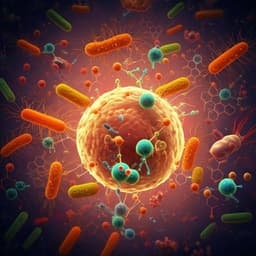
Medicine and Health
Insights into the assembly of the neovaginal microbiota in Mayer-Rokitansky-Küster-Hauser (MRKH) syndrome patients
N. Chen, L. Hao, et al.
This longitudinal study reveals intriguing insights into the neovaginal microbiota assembly in MRKH syndrome patients post-laparoscopic peritoneal vaginoplasty. Early microbiota displayed stochastic characteristics, with *Enterococcus faecalis* and Mycoplasmas flourishing. Remarkably, the neovagina evolved to mimic a normal vagina over time, hinting at ways to enhance neovaginal health. This groundbreaking research was conducted by the authors listed below.
~3 min • Beginner • English
Related Publications
Explore these studies to deepen your understanding of the subject.







